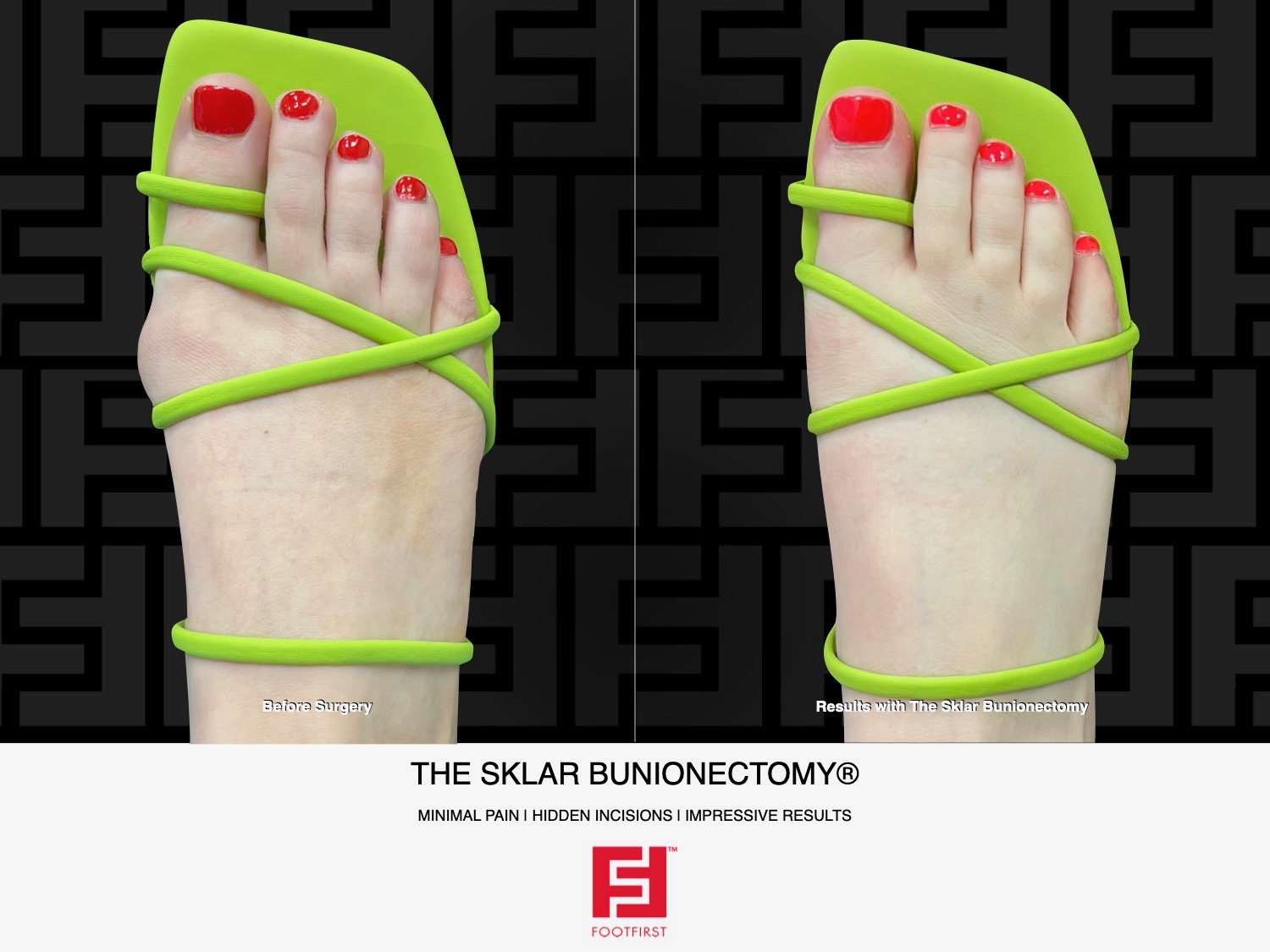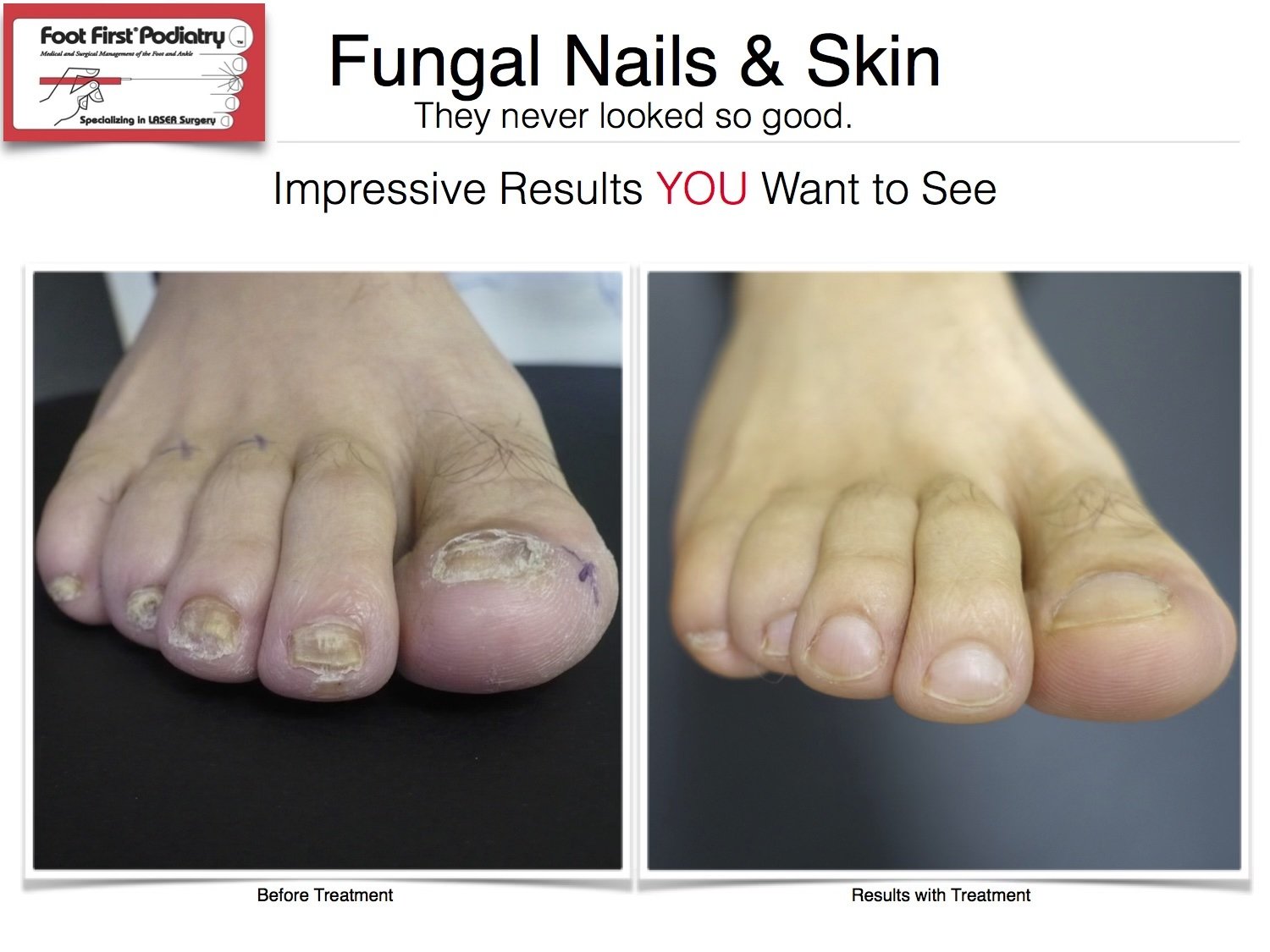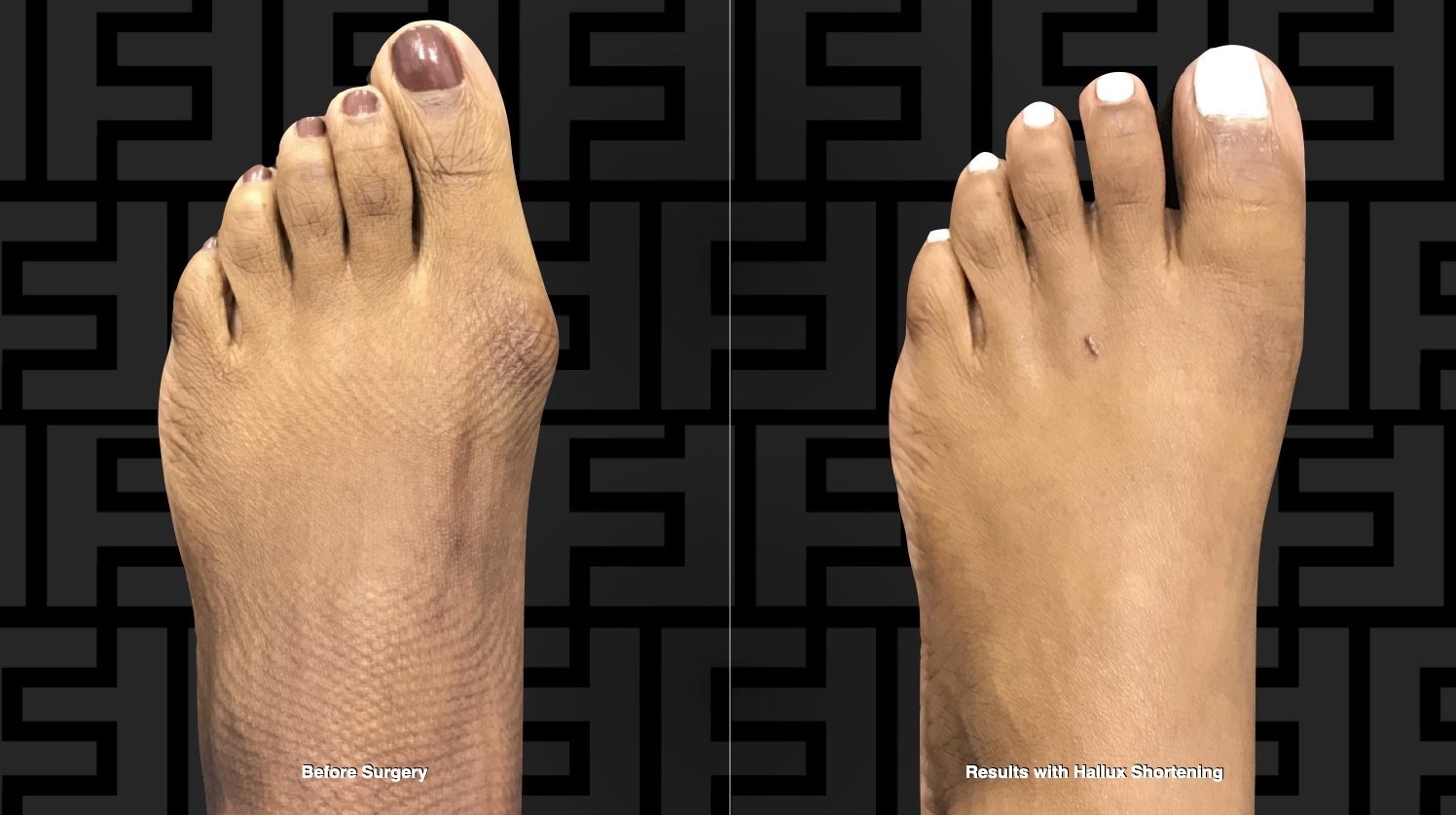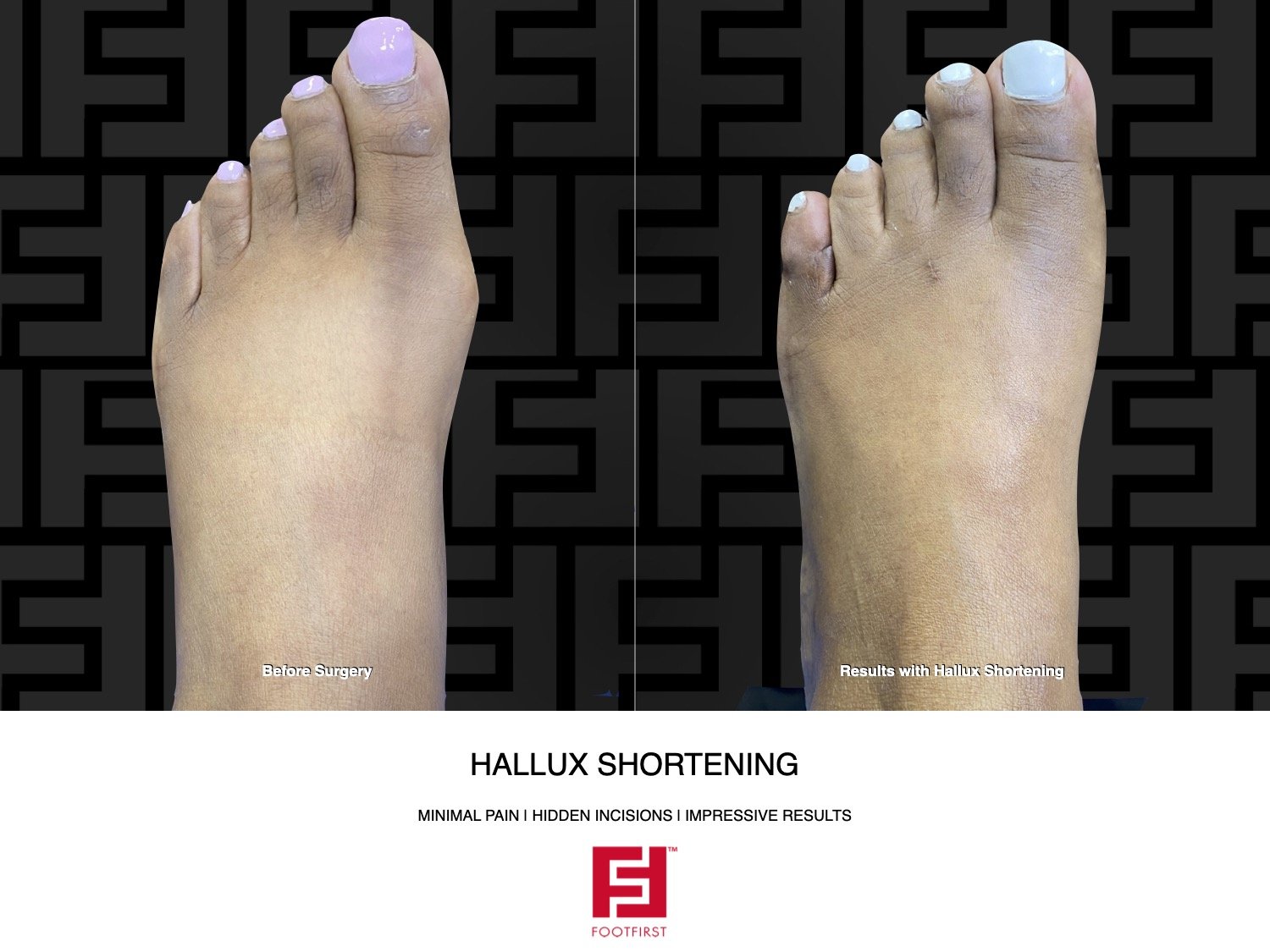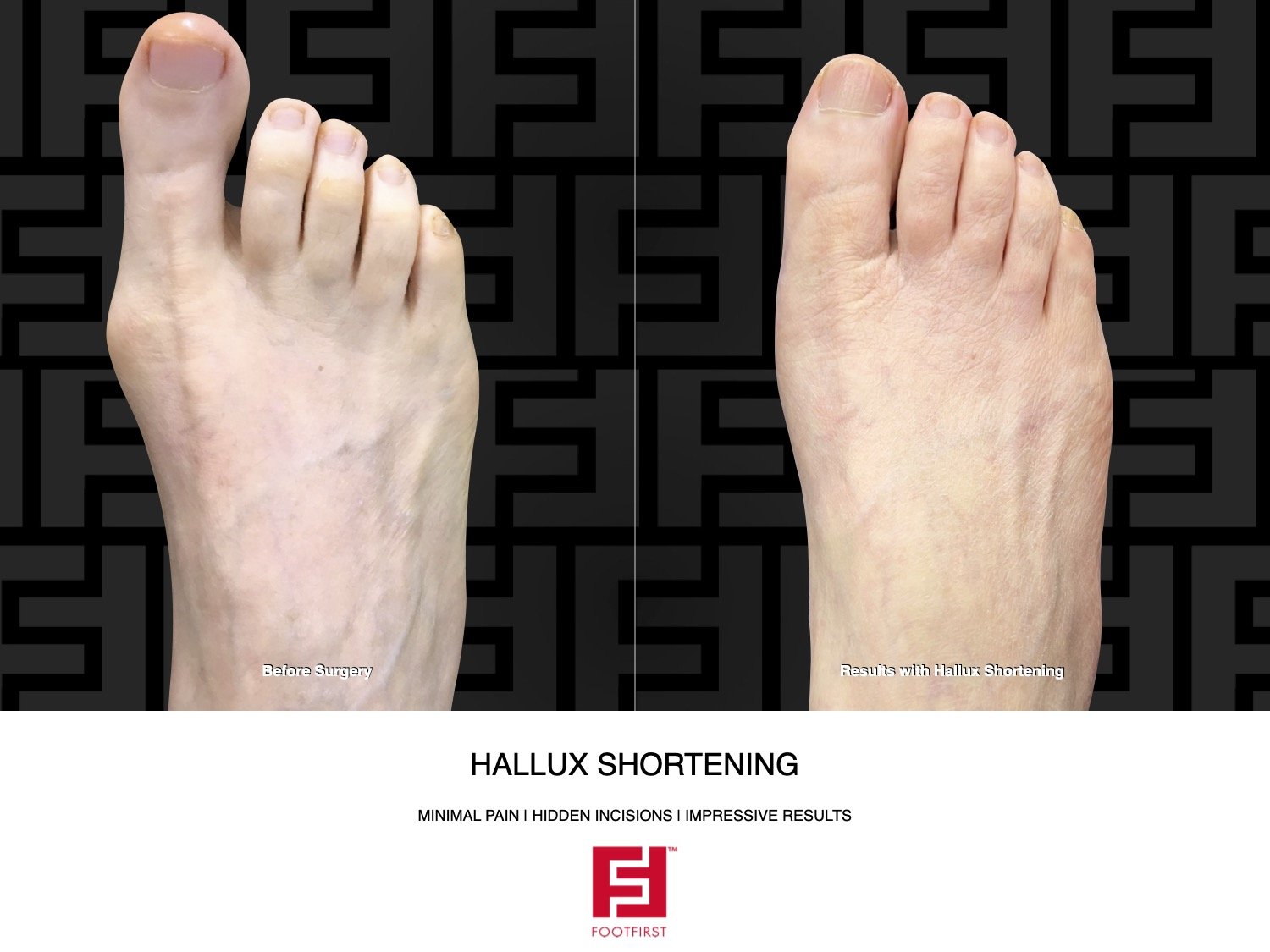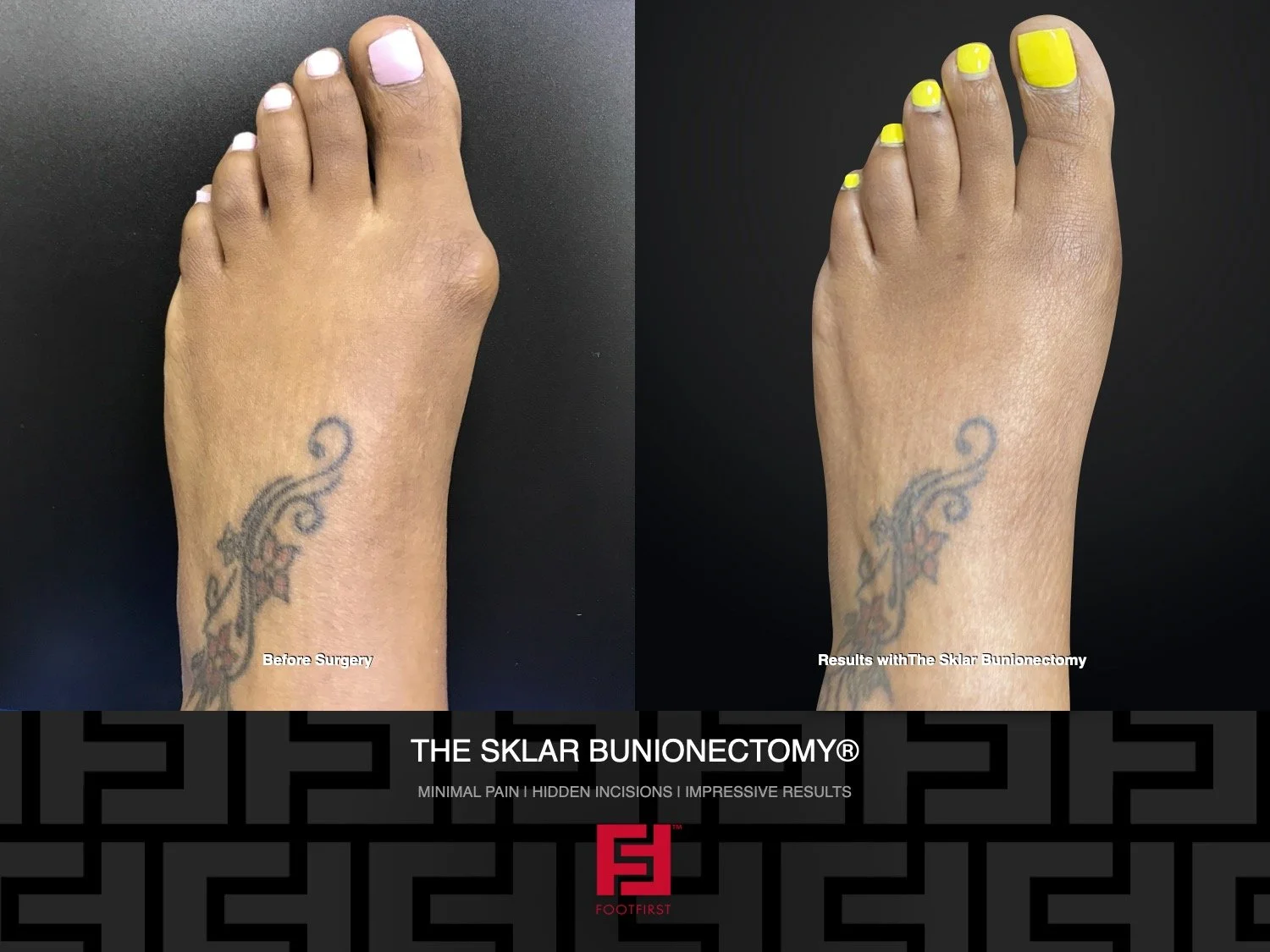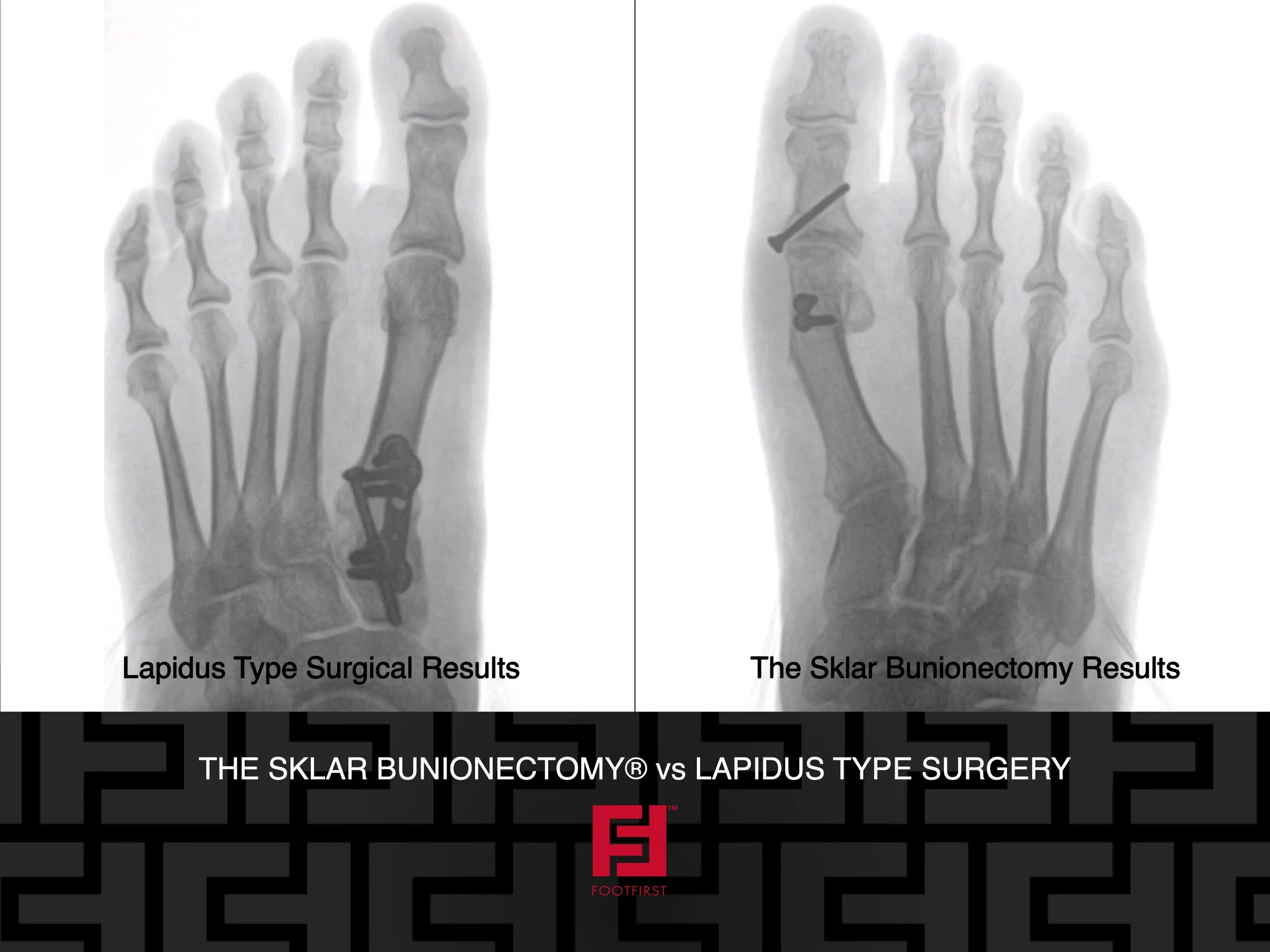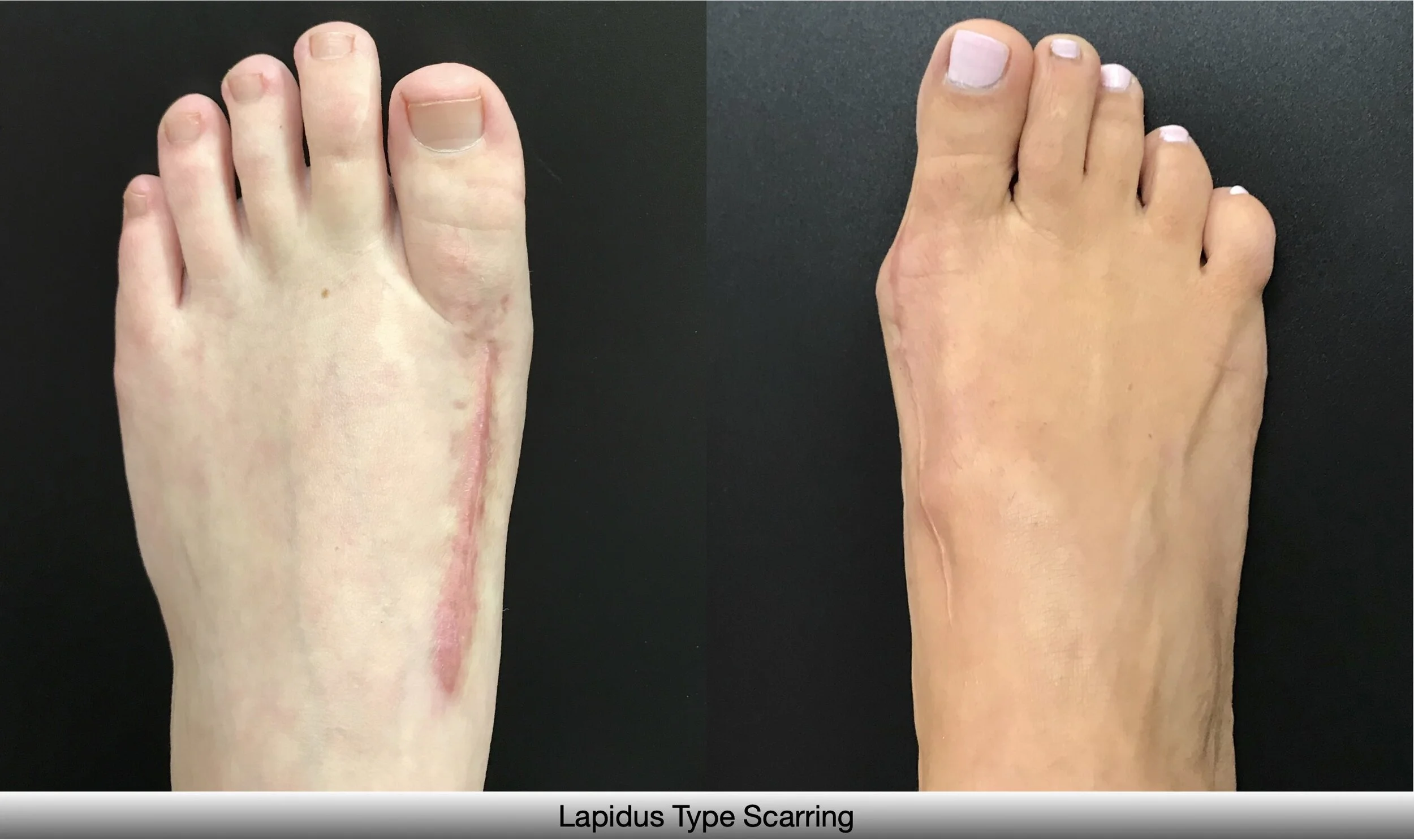We frequently get asked in our practice, “What is the difference between minimally invasive surgery, and minimal incision surgery?” Though the two names sound very similar, they are two very different ways to perform bunion surgery.
Procedure Descriptions
Minimally invasive bunion surgery refers to our procedure, The Sklar Bunionectomy® that is performed at the first metatarsal-phalangeal joint where the bunion deformity takes place. A small hidden incision that measures approximately 3-4cm on the side of the bunion and close to the bottom of the foot is made. We cut the bone at the head of the first metatarsal, in an area that heals consistently and predictably. Another cut is made in the proximal phalanx. The cuts are made using a thin blade with an oscillating saw. We use two to three screws to fixate this procedure. This is called minimally invasive, because it is much different than traditional bunion surgery that creates long visible scars on top of the foot and potentially excessive hardware. These long dorsal scars are not only ugly, but can also cause problematic adhesions and scar tissue.
Minimally Incision surgery (MIS) refers to a completely different procedure, in itself. Small punctures are made around the bunion area so a small burr can be inserted. The burr is used to break the bone just behind the first metatarsal head. The number of incisions made and the number of screws used depends on the surgeon and their preference. The amount of bone that is removed or shifted is determined by intraoperative X-Rays.
What does this mean to me?
Because we make a small incision instead of punctures, we are able to visualize how we can correct the bunion. We can accurately see how much bone we are removing, and how much we are shifting the bone into position. We can see exactly where we are placing the screws, and where exactly all the important soft tissues are so we can avoid and protect them. Because we can protect the tissues from the saw, our patients have a lot less swelling than the typical minimal incision patient. Also, because we use a bone saw instead of a burr, we typically have significantly less shortening of the first metatarsal. With less shortening you get less instances of an elevated big toe that doesn’t touch the ground.
Recovery
With our Sklar Bunionectomy® the recovery is much more manageable. Our patients are able to step on their feet immediately after surgery. In fact, our patients walk out of surgery safely to their respective rides to take them home. They are to be bandaged in a surgical shoe for approximately two weeks, then they are able to wear a tennis shoe comfortably. We do limit our patient’s walking, however most are able to return to a desk job within about three days. We also do not restrict driving even if surgery is performed on the right foot. Return to full activity can be as soon as 8 weeks.
Although MIS surgery sounds like it would be an easy recovery because of the small incisions, the reality is that MIS relies greatly on bandaging and reduced activity to provide its result. Depending on the surgeon crutches may be required, however most patients are also able to walk in a surgical shoe. However, generally patients with MIS are required to have bandaging, or wear a surgical shoe for 6 weeks, and a return to full activity may not be until at least 3-4 months.
Cosmetic Result
Fixing Feet Beautifully™ is our motto at Foot First because we pride ourselves with not only how our Sklar Bunionectomy® functions, but also how beautiful it leaves a foot. There is a remarkable difference with how a foot that has healed from an MIS bunionectomy versus with the Sklar Bunionectomy®.
With the Sklar Bunionectomy® our small scars are hidden to the side of the foot where they cannot be seen. There is also minimal to no shortening of the big toe to make it look disproportionate to the other digits. This means that after a patient has recovered from surgery their foot appears as if it had never needed surgery in the first place: naturally beautiful.
MIS surgery has a less consistent result because the surgeon has less control over what is happening internally by not making an incision. This can leave the cosmesis to be somewhat abnormal looking, and not the naturally beautiful result a patient can hope for. This can mean the toe sits elevated, it can be too straight or not straight enough. Sometimes it can even appear twisted.
Both the Sklar Bunionectomy® and MIS procedures can undoubtedly offer good results when correcting a bunion, however the journey to the end result is drastically different, as well as the consistency in appearance and functionality. We at Foot First always recommend patients to read reviews, and ask for before and after pictures when choosing their surgeon and procedure. To us the obvious choice is always the Sklar Bunionectomy® .


